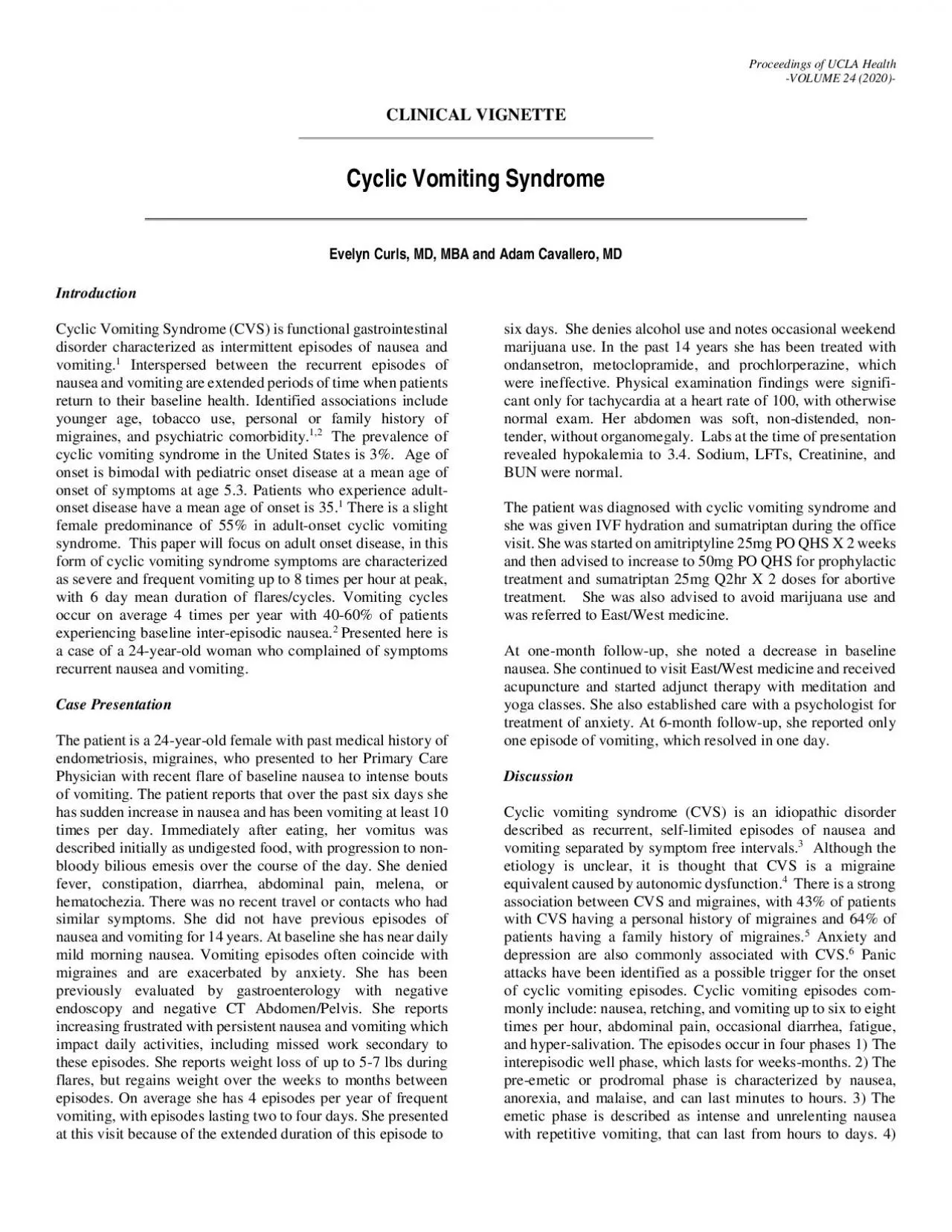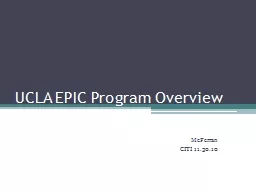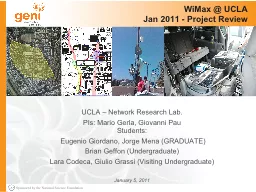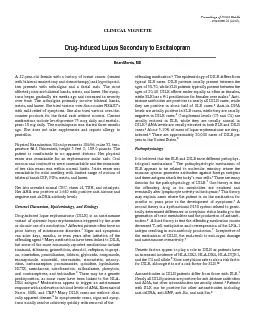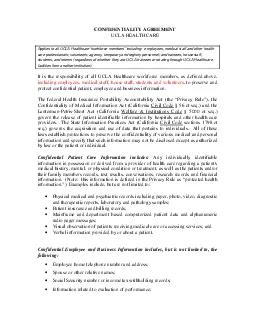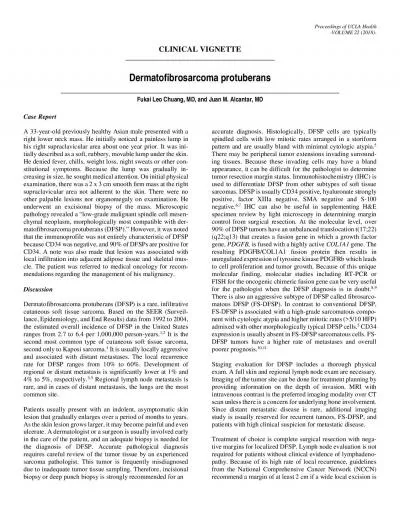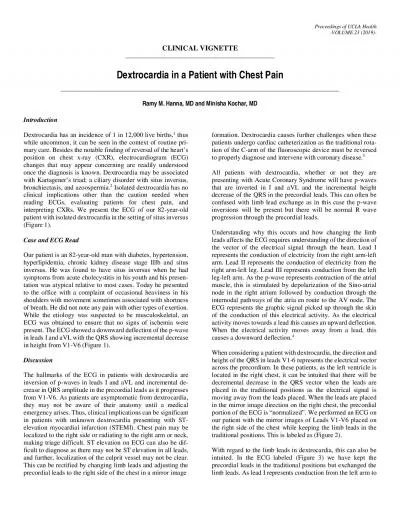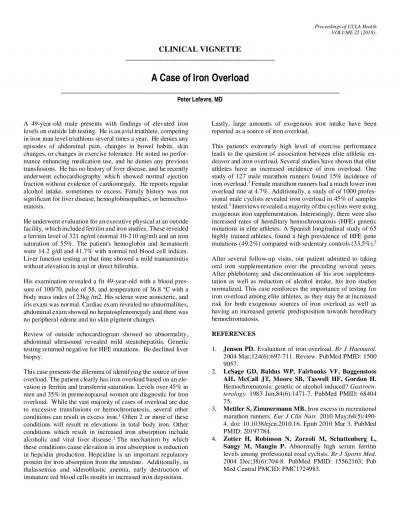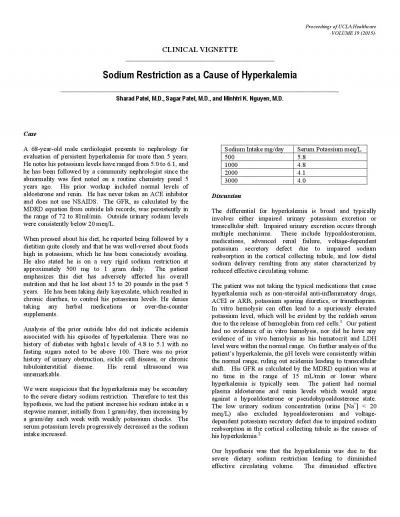PDF-Proceedings of UCLA HealthVOLUME 22020CLINICAL VIGNETTE
Author : byrne | Published Date : 2022-08-26
Cyclic Vomiting Syndrome Evelyn Curls MD MBA and Adam Cavallero MD IntroductionCyclic Vomiting SyndromeCVSis functional gastrointestinal disorder characterized as
Presentation Embed Code
Download Presentation
Download Presentation The PPT/PDF document "Proceedings of UCLA HealthVOLUME 22020CL..." is the property of its rightful owner. Permission is granted to download and print the materials on this website for personal, non-commercial use only, and to display it on your personal computer provided you do not modify the materials and that you retain all copyright notices contained in the materials. By downloading content from our website, you accept the terms of this agreement.
Proceedings of UCLA HealthVOLUME 22020CLINICAL VIGNETTE: Transcript
Download Rules Of Document
"Proceedings of UCLA HealthVOLUME 22020CLINICAL VIGNETTE"The content belongs to its owner. You may download and print it for personal use, without modification, and keep all copyright notices. By downloading, you agree to these terms.
Related Documents

